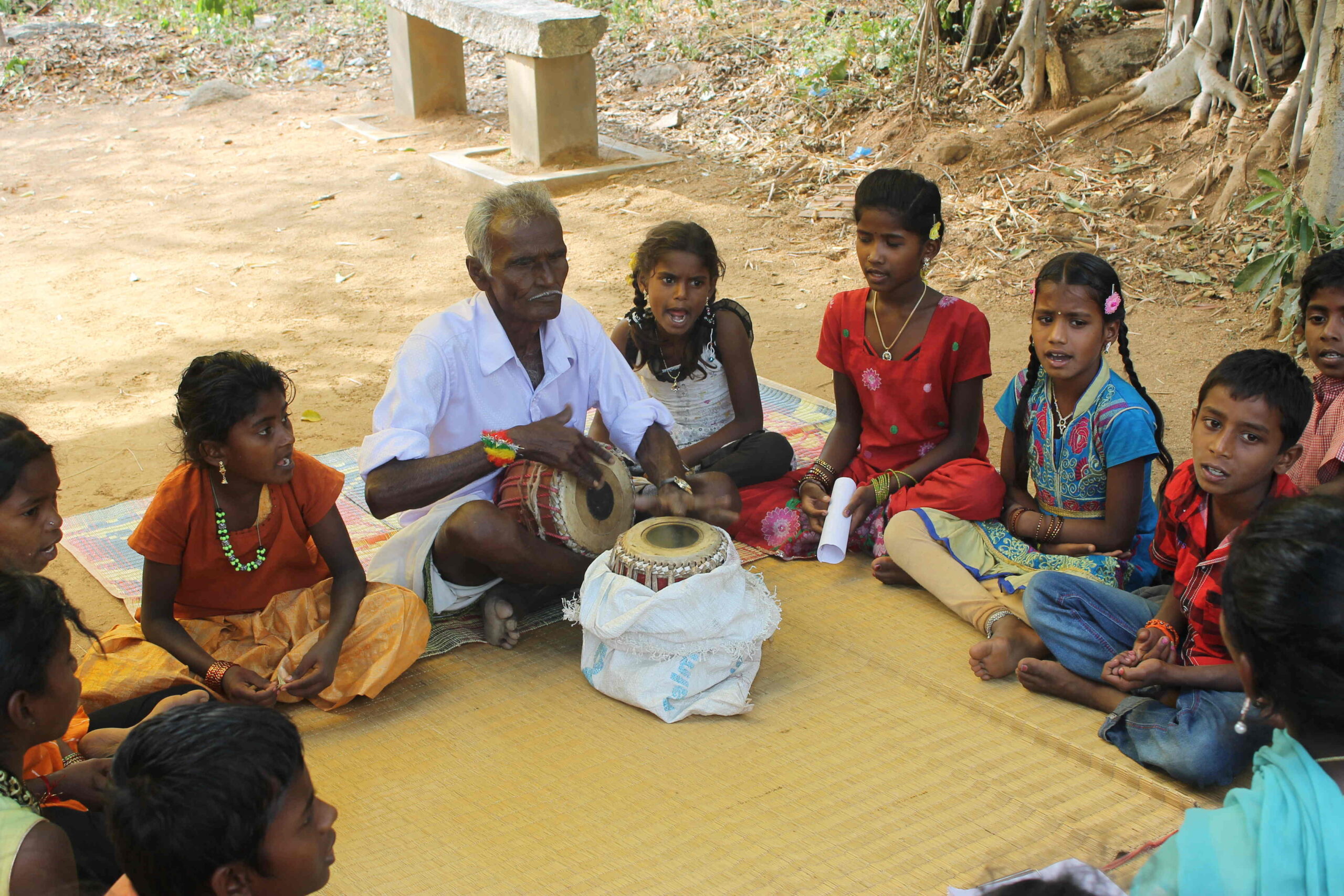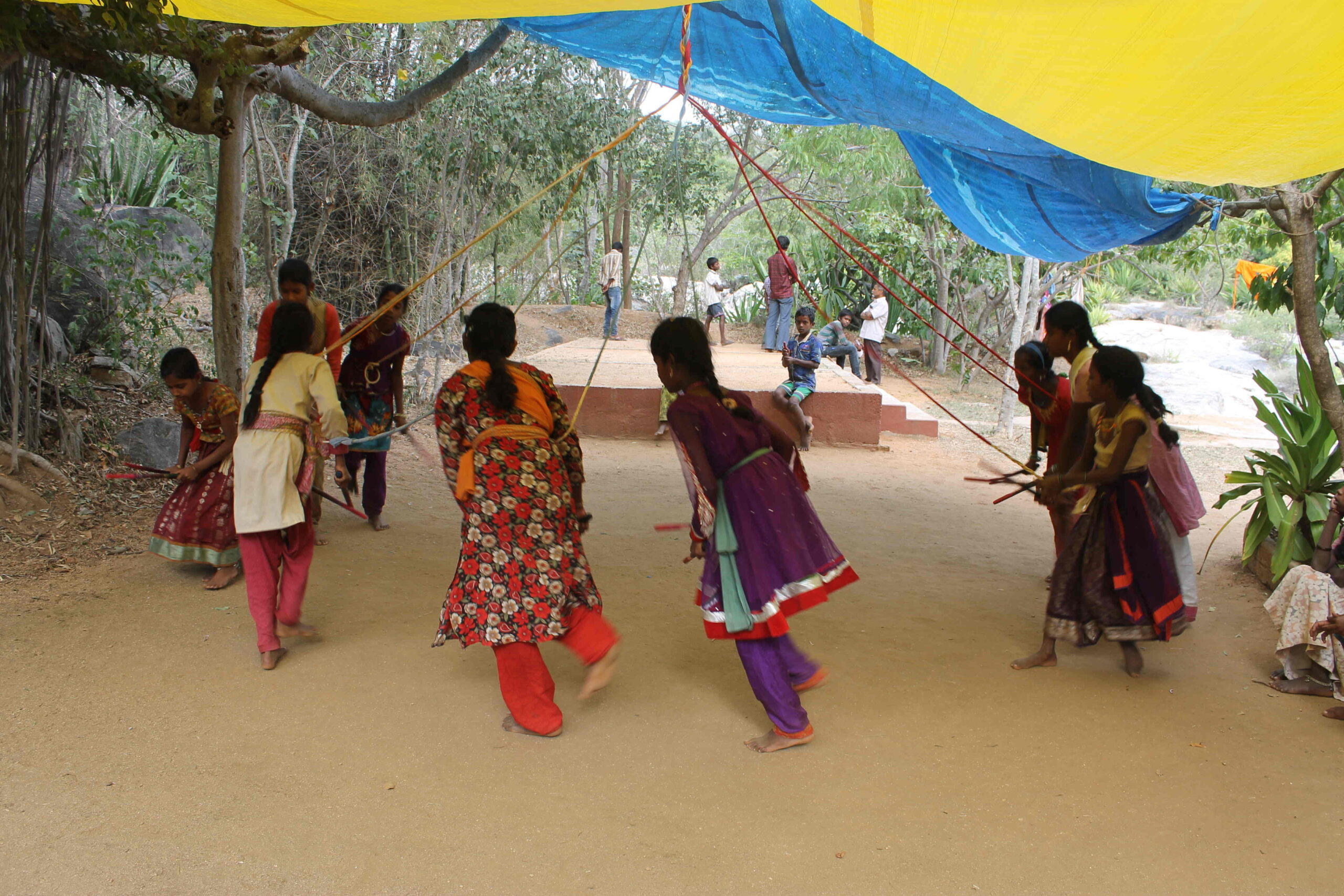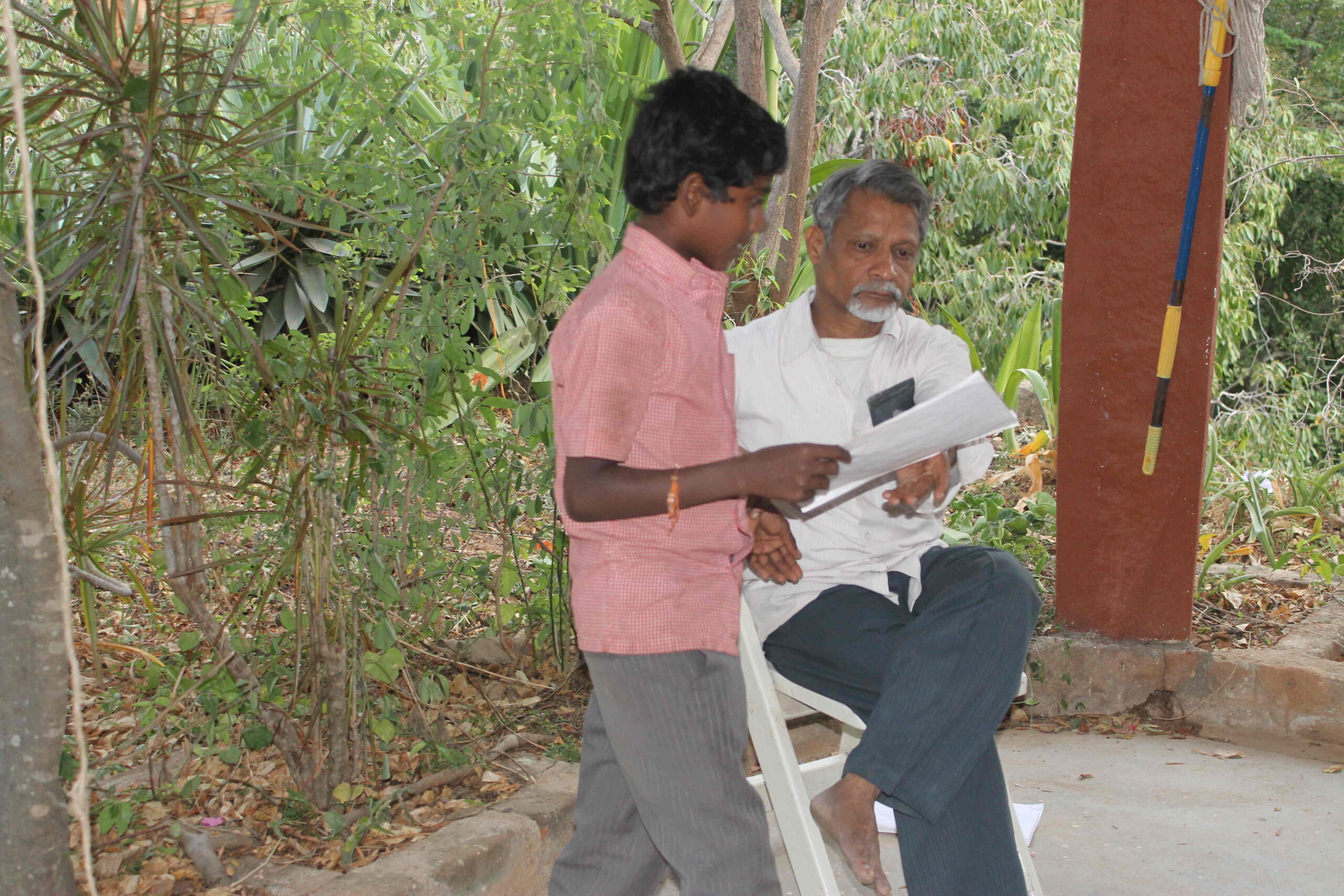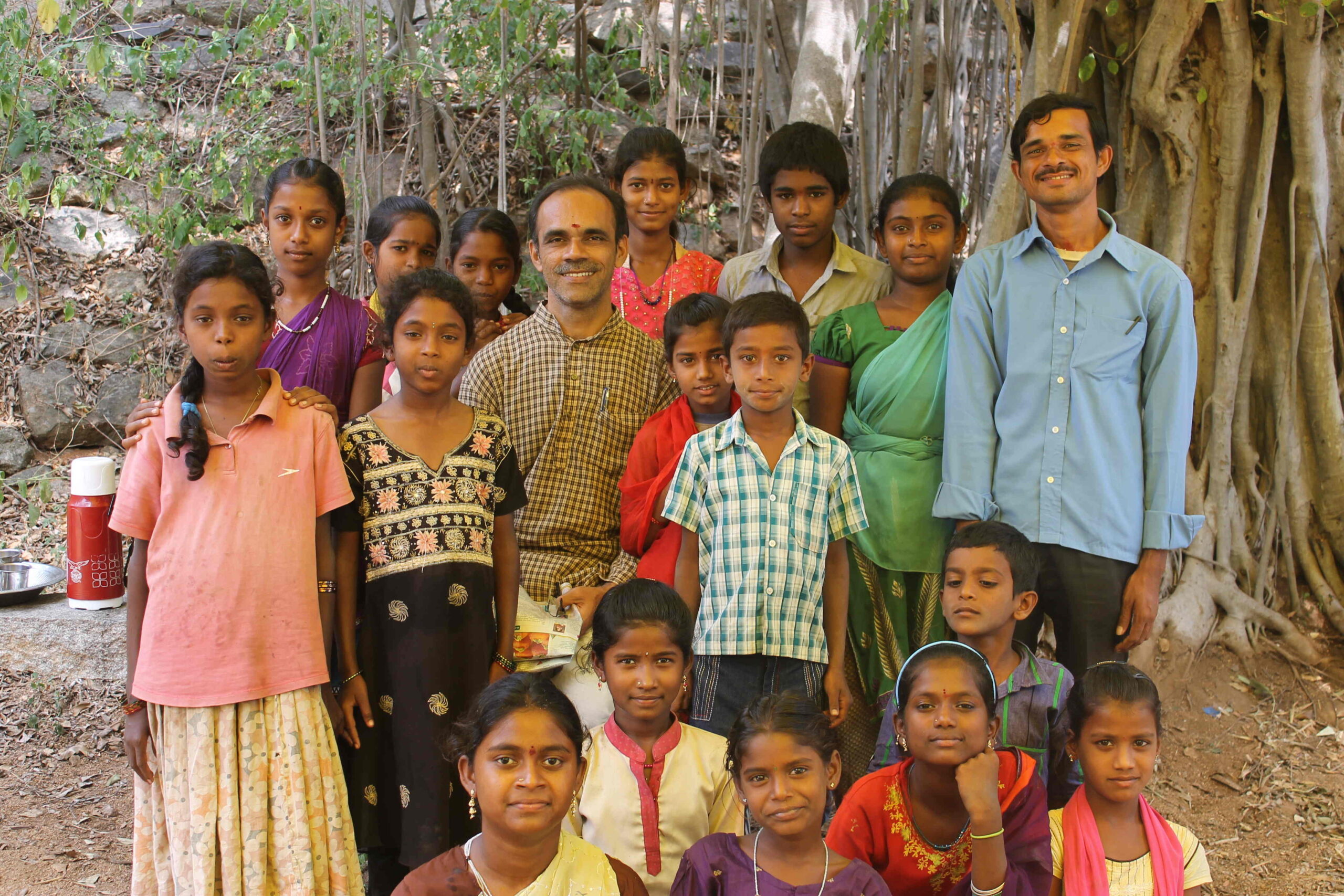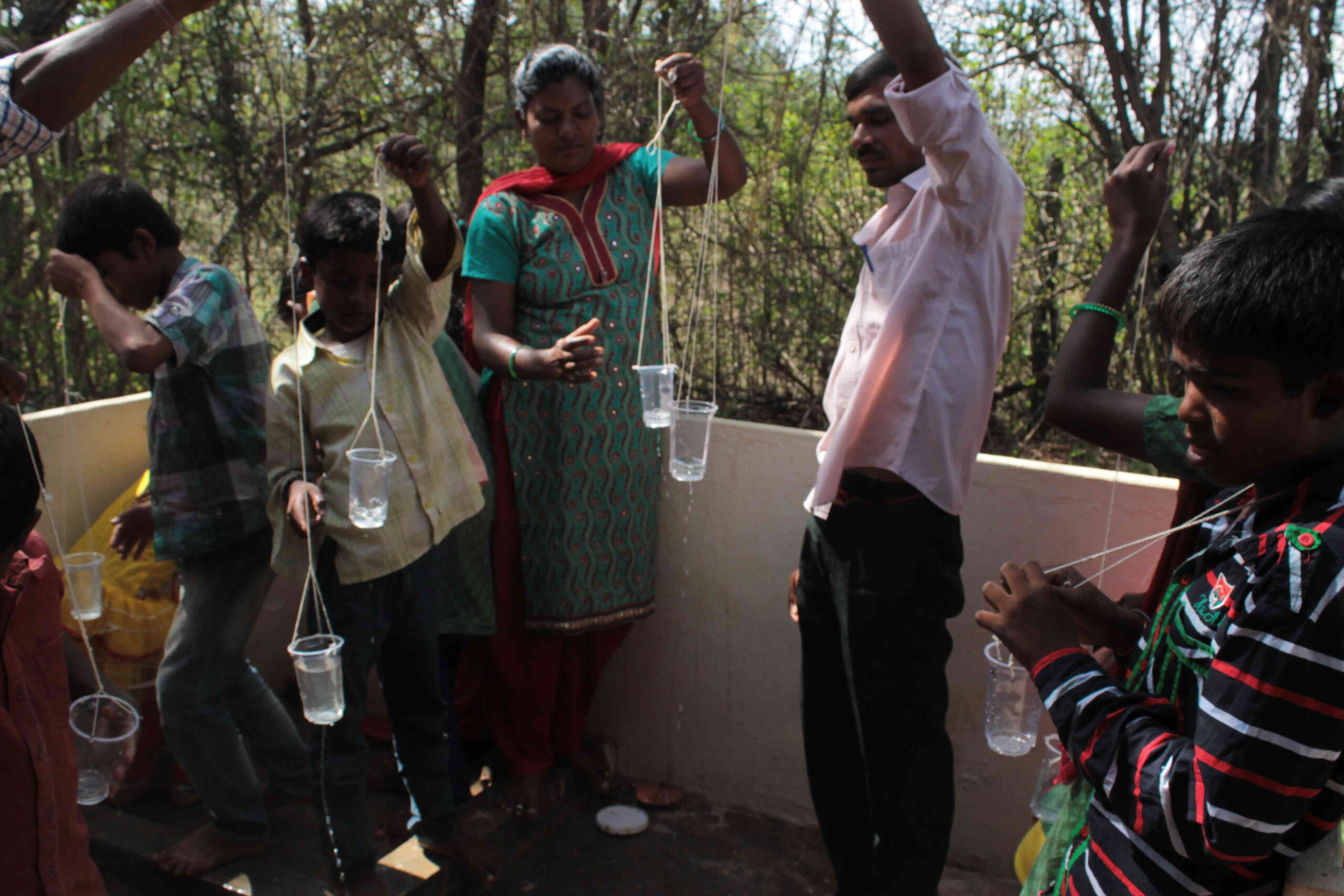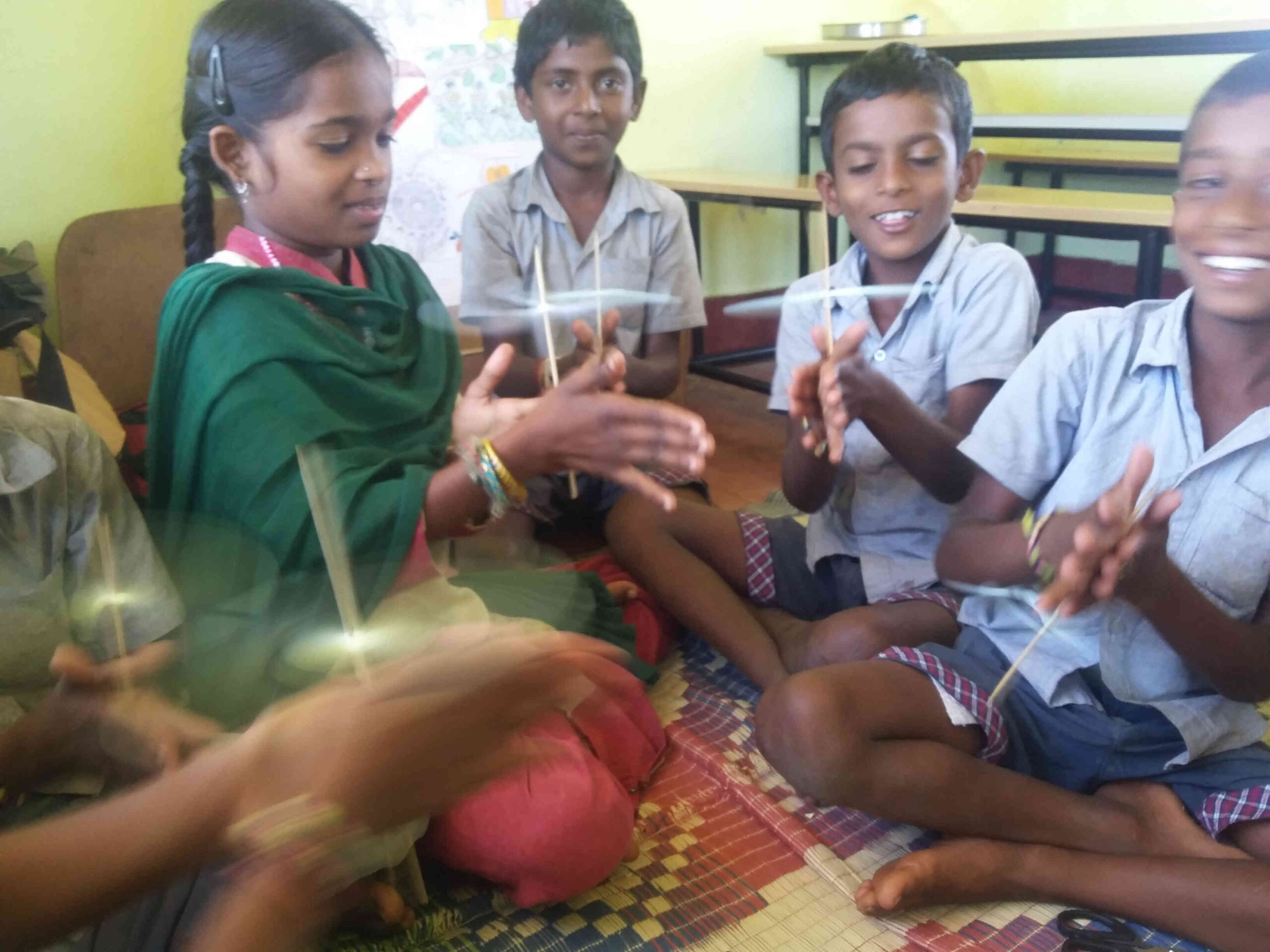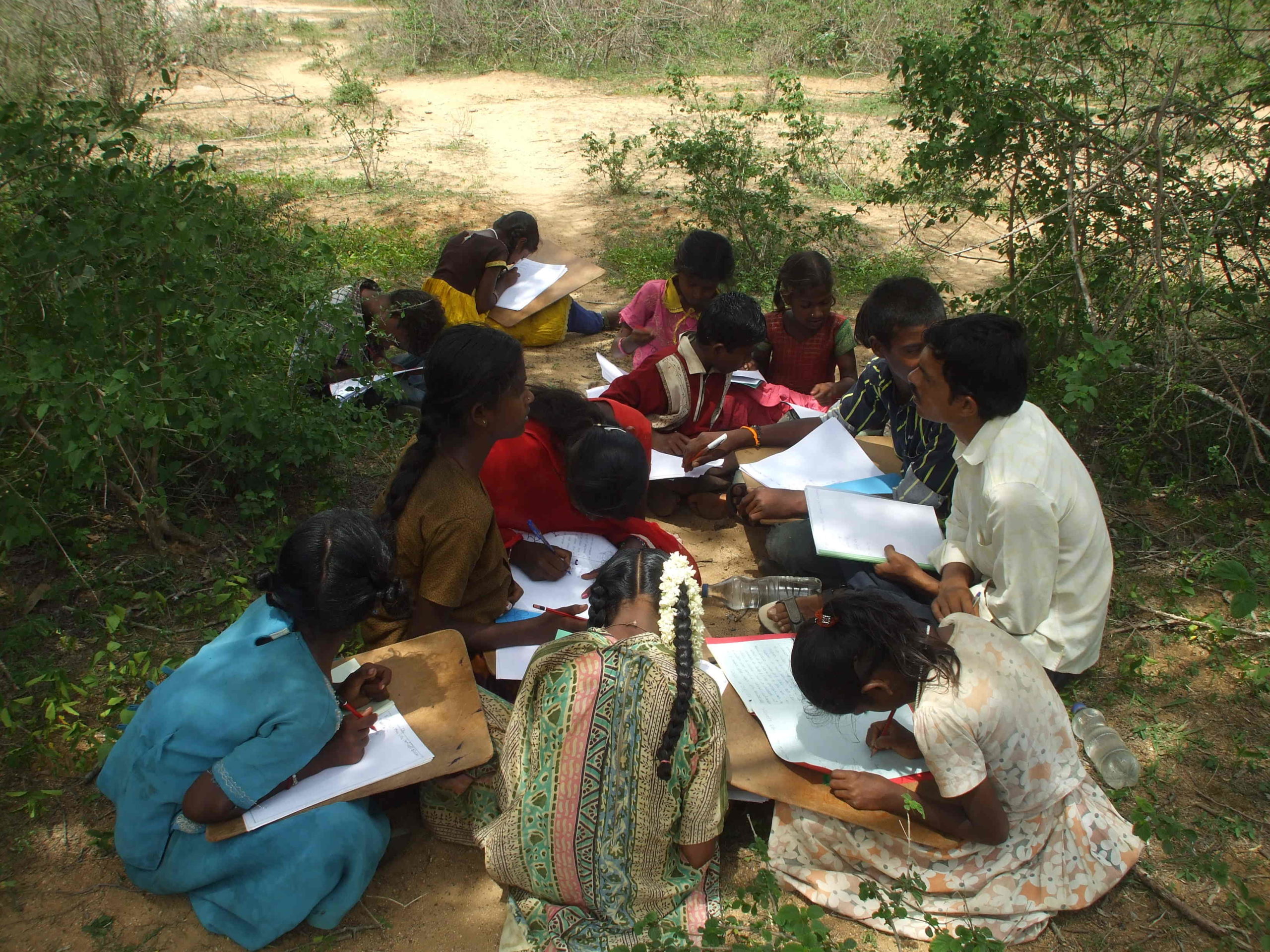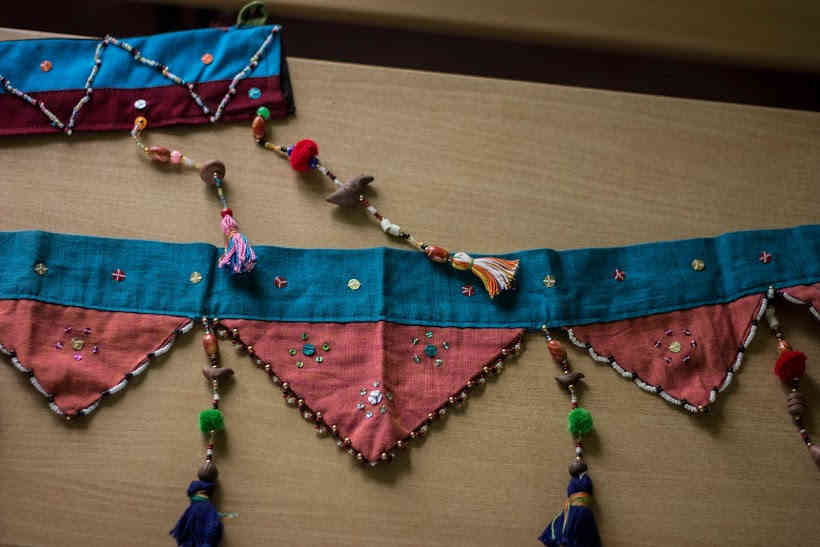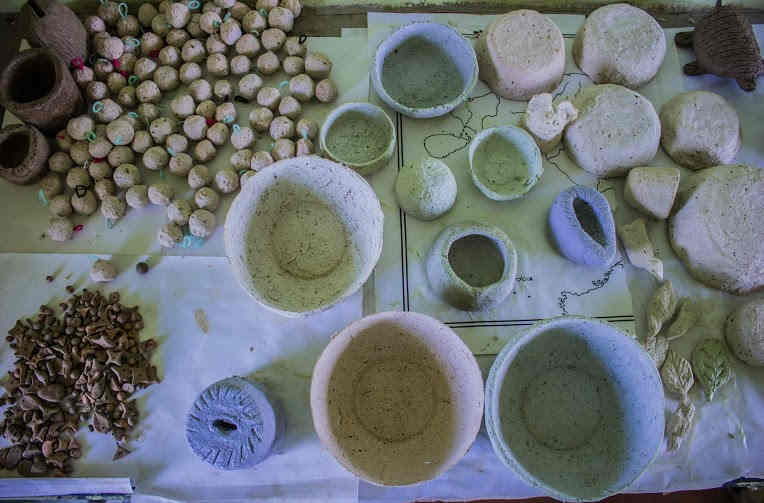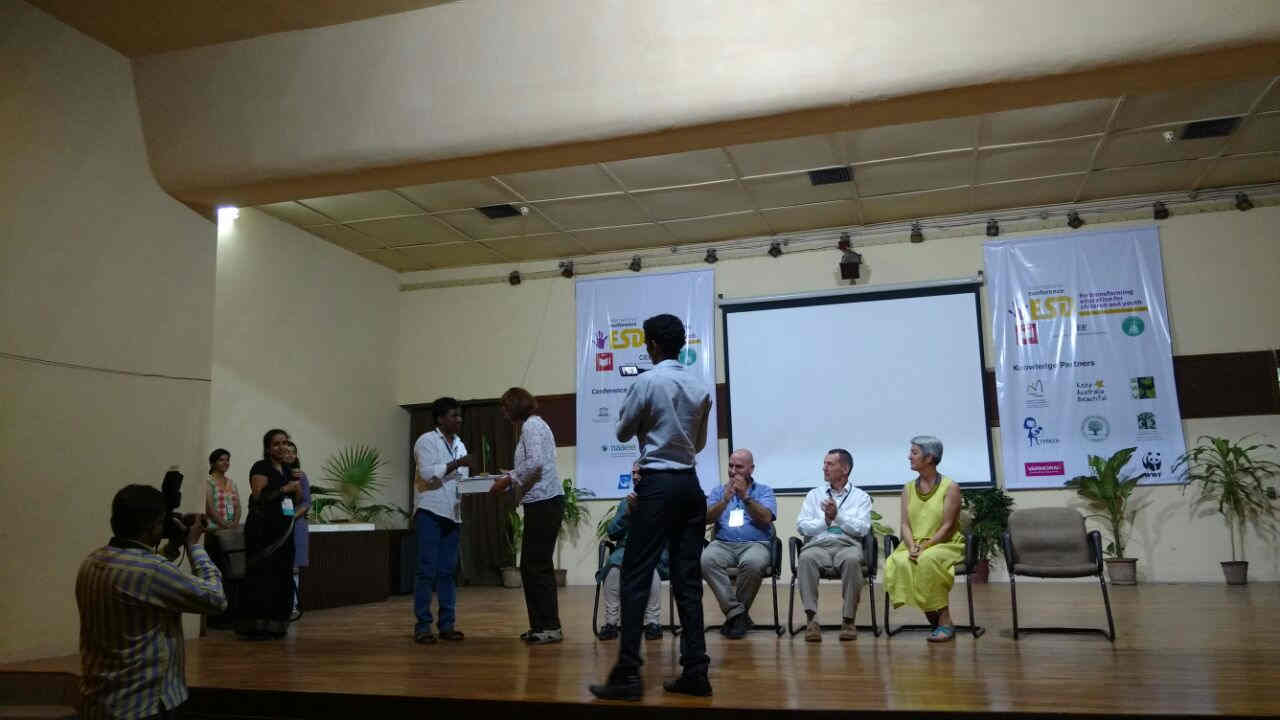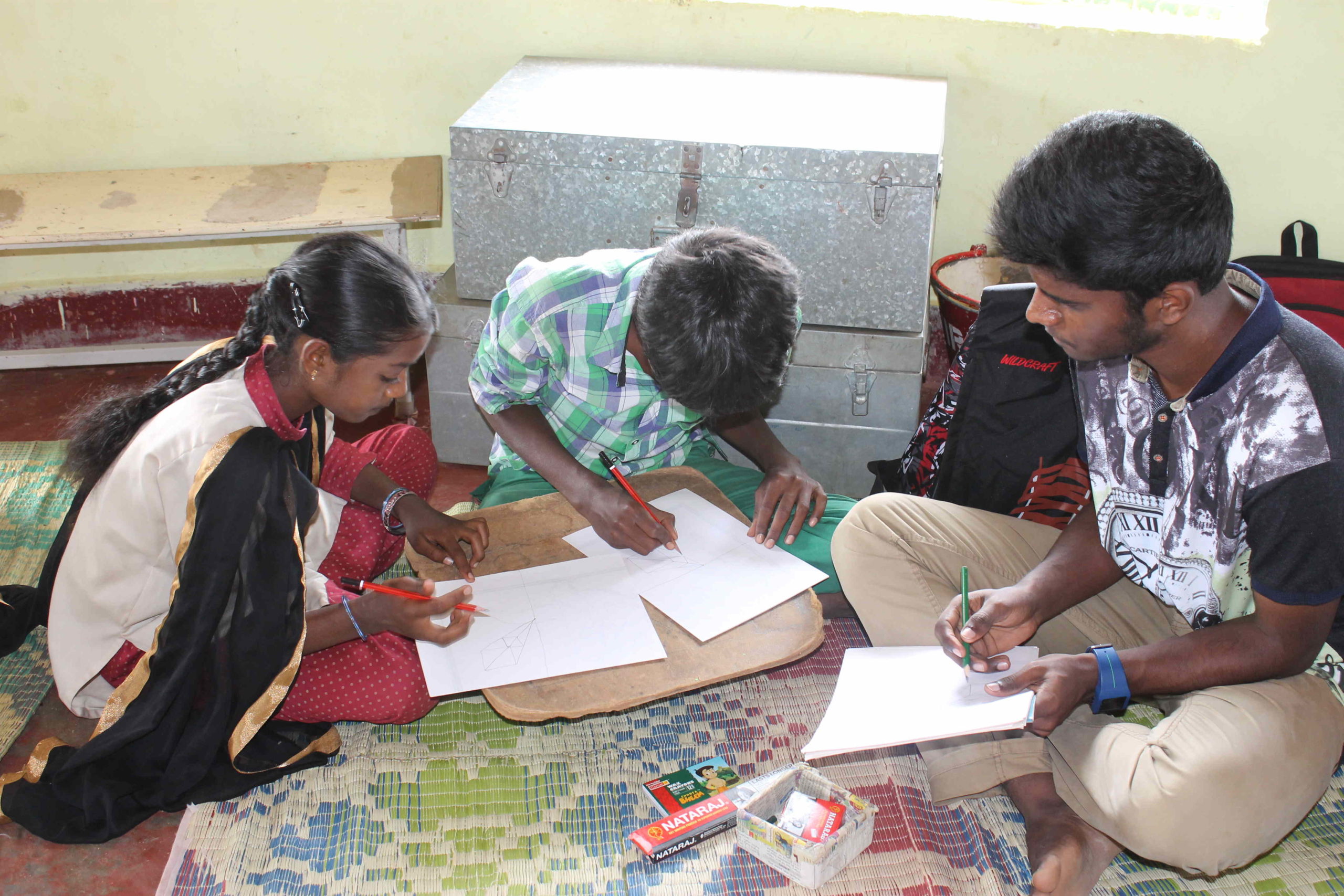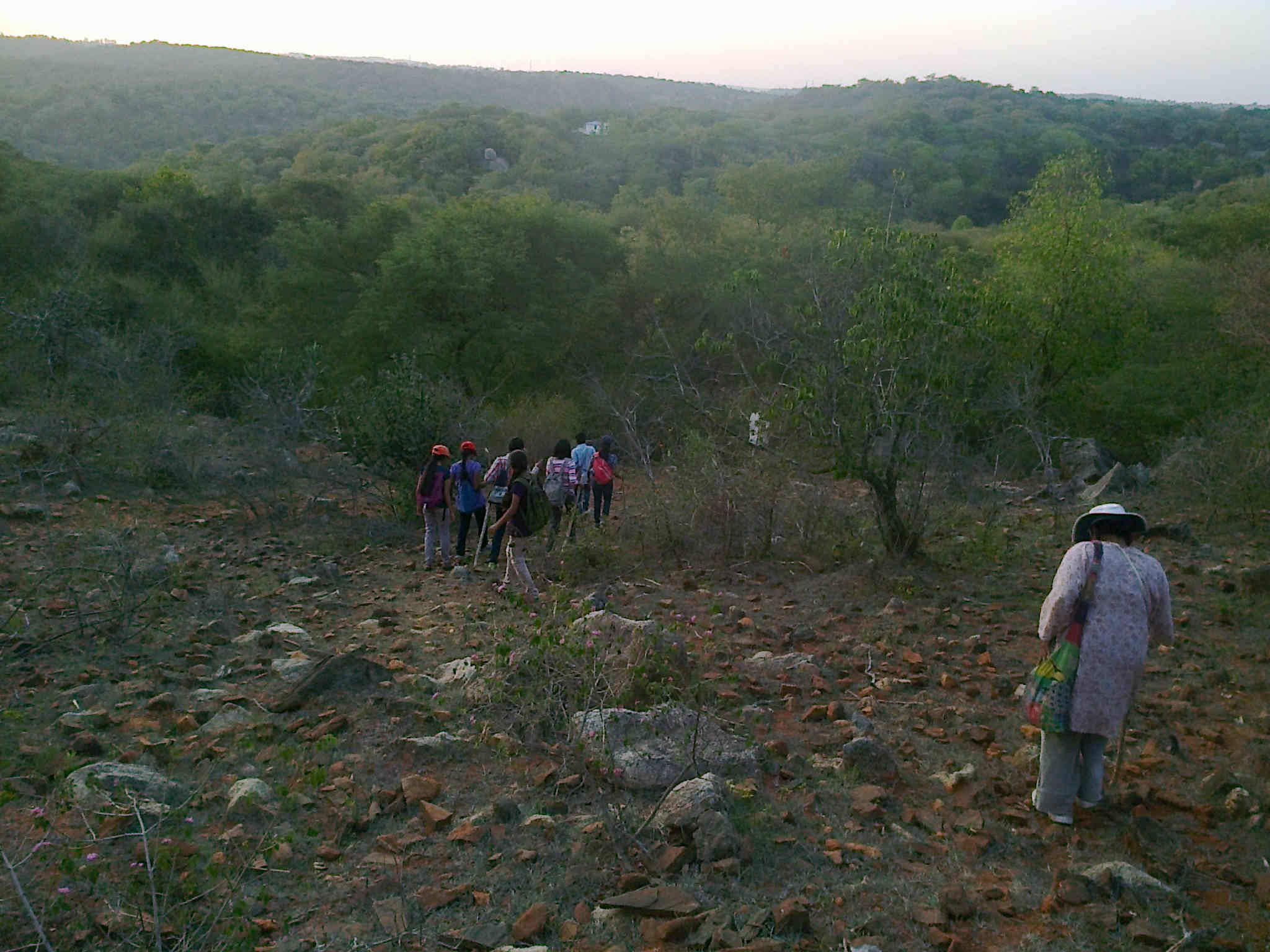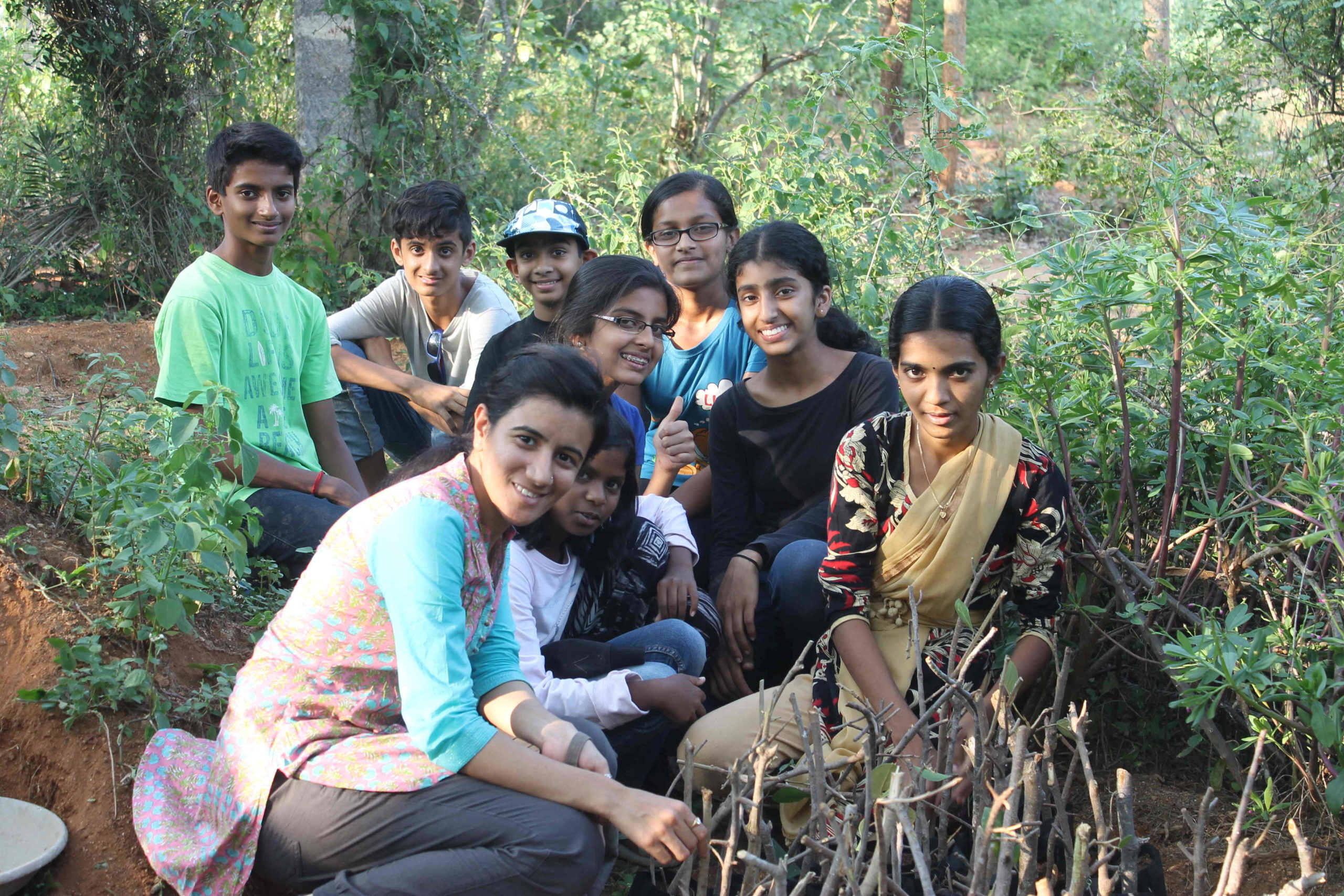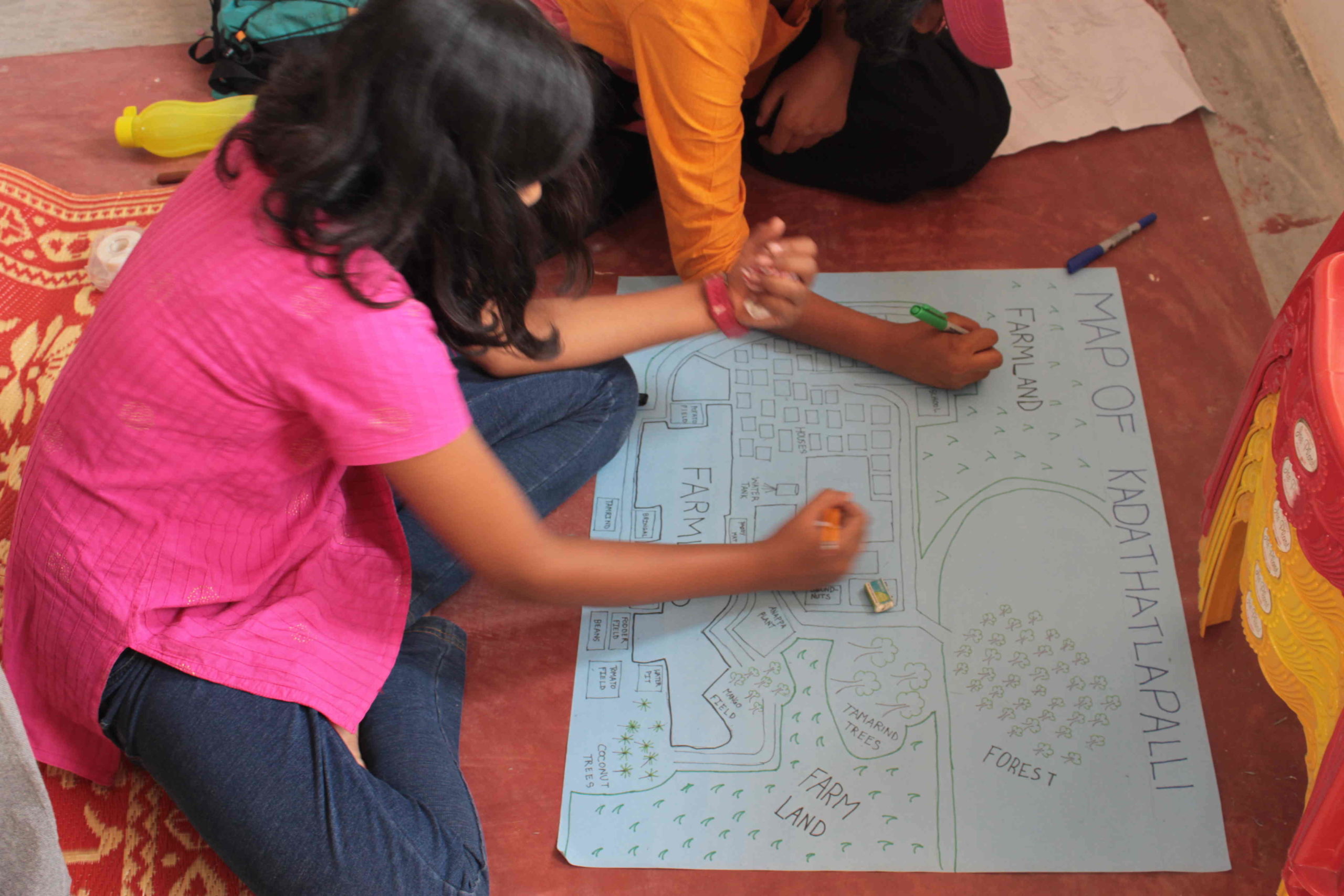KAIGAL EDUCATION AND ENVIRONMENT PROGRAM
KRISHNAMURTI FOUNDATION INDIA
KAIGAL, THOTTAKANAM POST, CHITTOOR DISTRICT, A.P
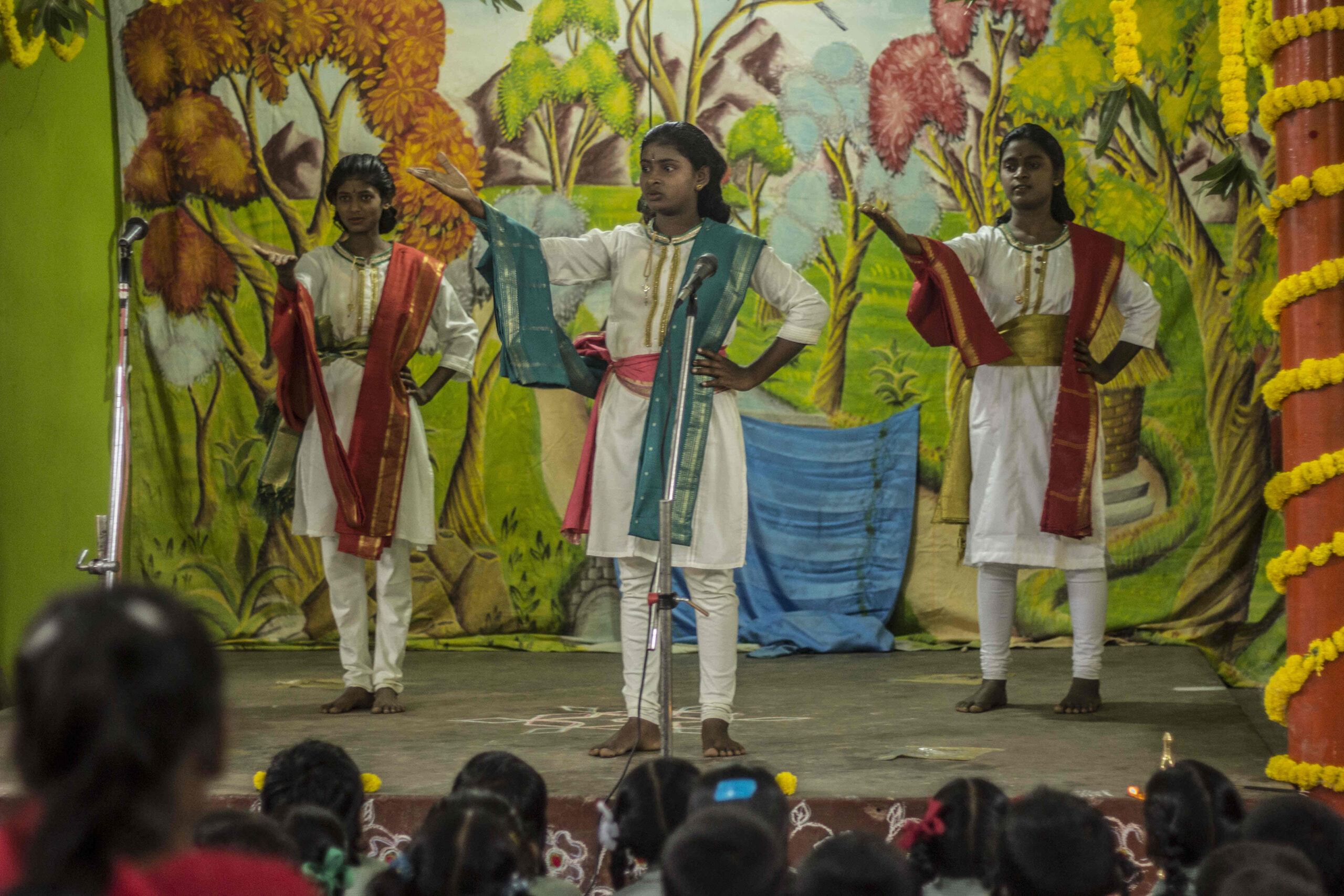
REPORT FOR THE YEAR APRIL 2016 – MARCH 2017
Table of Contents
Strengthening the academic program
Integrating conservation modules into the curriculum
Environment education programs
Networking and building alliances
INTRODUCTION
This year saw us complete 15 years from the time we began as an effort to conserve and afforest the area around the Kaundinya Wildlife Sanctuary. Conservation and education are the key thrust areas of the program and this past year saw our efforts getting recognized by external organizations. The key community members we were working have been able to take up the conservation work further in their communities. The community supported Sanctuary schools have become oases for learning, with enrollment increasing and older students returning to teach the younger ones, holding the promise of a sustained educational change. Our efforts in integrating environmental science understanding into the school activities and through the school to the community is helping the development of an ecologically responsive curriculum.
Even as we are encouraged by the progress, the challenges of today’s changing economic and societal structures are being felt in the communities in all aspects – resources, education and local enterprise. Our efforts need to be continually in this direction, of strengthening the local communities and capabilities, to respond to the changes around them. The areas of our work for this year and going forward will be in terms of building skills and capabilities within the community to take responsibility for local bio-resource conservation and enhancing the school education program to build skills that will allow them to interface with the changing world. Knowledge building and sharing will be a key focus of our operations this year.
As in the previous years, our two-fold efforts in education continued in terms of
1. Sanctuary Schools
2. Environment Education Programs (EEP)
Sanctuary Schools
A brief background: The schools completed their 13th year in March 2017, from the time they began in response to the need felt by the community for a good environment for their children. Over the years the schools have grown in their operations in Kalligutta and Mugilupodarevu. All children above 3 years of age in these villages come to schools and almost all of them continue with their studies by joining a Government High School – day school or residential – once they reach 11 or 12 years of age when they leave the Sanctuary Schools. A few students also continue their studies after class 10. Both the schools are registered under the Right to Education Act (2009)1 and are staffed by qualified teachers. All the teachers have finished their graduation/post-graduation followed by a B.Ed degree. They either belong to the community or are from the neighborhood.
The work in the sanctuary schools focused on the following areas:
- Strengthening the academic work
- Enrichment program for the students in hands-on science, art and craft, physical fitness and performing arts
- Combining conservation activities with the core school curriculum
Strengthening the academic program
All the children in the villages, above three years of age are attending the schools. The oldest children attending schools are aged 18, girls who are keen to study further but unable to leave the community. These older students are being mentored by the teachers to take up the school leaving examination under the National Institute of Open Schooling.
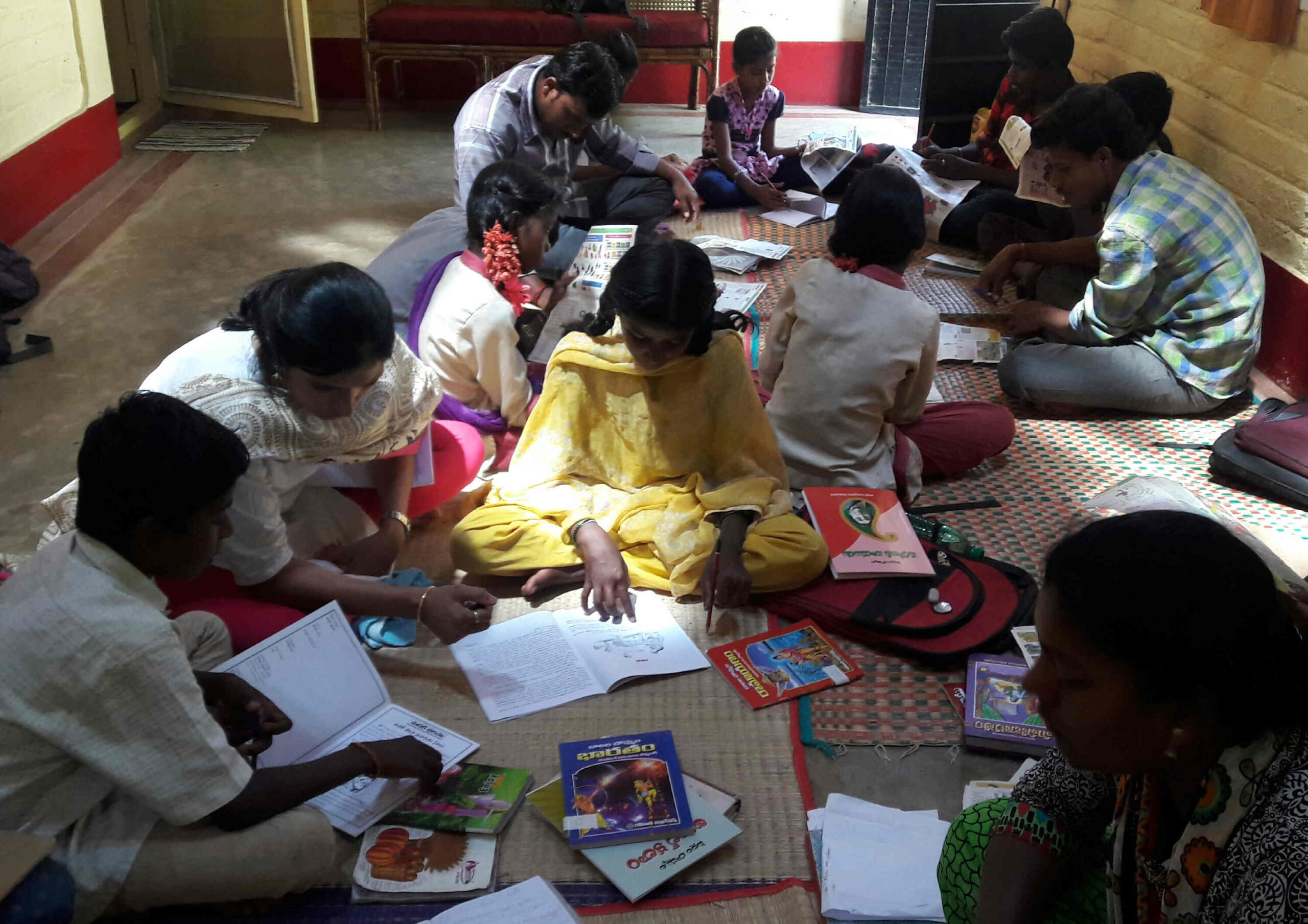
Review of student work
The teacher development program continued with regular review and feedback meetings with the students. The Telugu program received additional inputs for strengthening the students’ creative expression.
Digital resources for learning have also been introduced in the schools to support the students learning.
The pre-school program received an additional input from Ms Chaitra, a special educator, and a student from the MA Education at Azim Premji University. She worked with the pre-school children as well as with music and English for the older students.
Totally five students registered for NIOS in 2016-17. Two were in class 9, one in class 11 and one each in classes 10 and 12. These students attended regular classes and were coached by the teachers of the Sanctuary Schools. Durga and Beemudu who wrote 12 and 10 exams respectively have passed with good percentages. Durga has appeared for D.Ed entrance examinations and is aspiring to be a teacher. She is the first girl student who has completed class 12 successfully from Kalligutta village and is also the first girl who will pursue higher studies.
Our student Chandrakala who appeared for her class 10 NIOS in April 2016 had passed with 65% and came back to the school to study for class 12 privately through NIOS.
Enrichment programs
Bringing language learning and theatre together
This year saw a new high in the curricular innovations being attempted in the Sanctuary Schools. Two senior, experienced and passionate teachers – Sri Rangacharyulu and Sri Venugopal – from the Rishi Valley School were at the Sanctuary schools conducting a 3-week long immersion program, during the Diwali holidays, working with the children on theatre, writing (Telugu), dance, and music. This culminated in a 2 hour program – “Balotsav”, where children went on stage to give a public performance.
The workshop was intensive and introduced students to theatre, dance, music and also creative writing. Planning the presentations, learning and preparing, day and night practice sessions, organizing the back stage and make-up on the final day – all these constituted an unique and memorable experience for the students. What it meant for the students to be on stage and for the parents and community to see their children on stage can only be imagined.
We are extremely thankful to Sri. Rangacharyulu and Sri. Venugopal for providing this unforgettable opportunity for these students. Some moments from the Balotsav are below.
|
Practising with the local percussionist |
Jadai Kolattam |
|
Preparing the script |
Under the banyan with the teachers |
Science learning through toy-making
The unique character of the curriculum in the schools has been the integration of hands-on activities with the acquiring of theoretical knowledge and this is particularly expressed in the thematic approach we have to environmental science. This effort was strengthened with the toy making workshops we conducted for students in both the schools. Learning to make toys – that demonstrate simple scientific concepts – from trash and locally available materials was the objective of this camp. Five such workshops were conducted in August, September and November. Needless to say, the students were thrilled to see the beauty of science and the magic of their hands in making toys.
|
Toys from waste materials |
Exploring science through toy making |
Workshops on Creative writing and expression

Creative writing
Dr Sudha Premnath, conducted a structured program of creative writing and expression for the older students at the Kalligutta School, to introduce them to reading, critical thinking and expression through writings and picture stories. Introducing them to English was an important focus of this program.
Exploratory in nature, and infused with richness of discussions and resources, this program allowed the senior most students in these schools to explore learning in an integrated, unfettered way. Creative expressions through poetry, stories and skits emerged from this program.
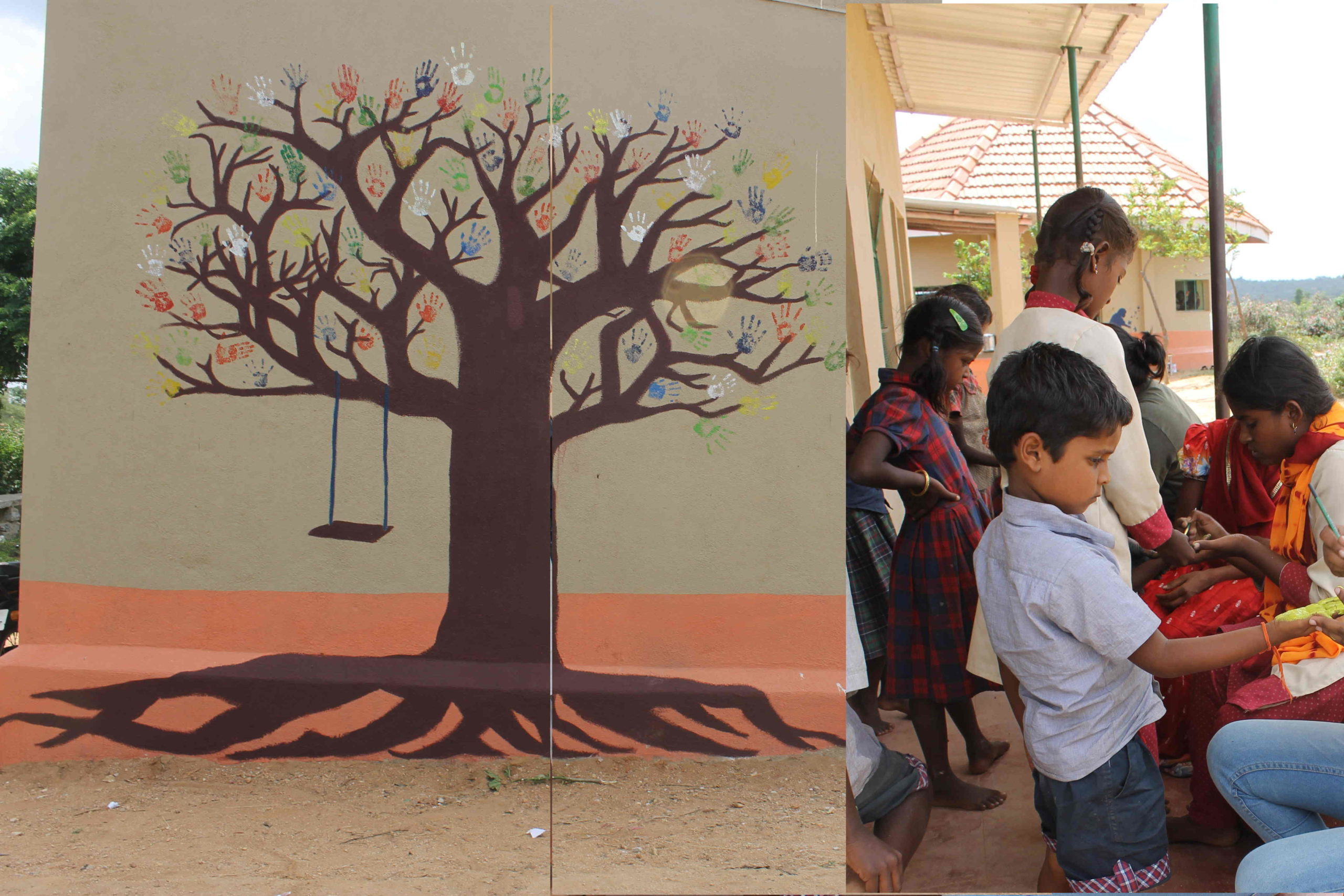
Wall painting at Kalligutta school
Workshops on craft and physical fitnesss
Students from Symbiosis Institute Pune and Valley School Bangalore conducted camps for students introducing them to different craft and physical fitness activities. The objectives of these camps are two fold : to build linkages with educational institutions for students to receive an exposure to working in different contexts as well as to introduce the children to resource persons from different backgrounds and contexts.
Integrating conservation modules into the curriculum
The Eco-schools program was completed during this year. This is an international award program of the Foundation for Environmental Education (FEE) headquartered in Copenhagen that guides schools to address a variety of environmental themes providing a simple framework to make sustainability an integral part of school life. The environmental themes taken up by the schools were Biodiversity, Energy, Waste Management, Water and Healthy Living.
The impact of this program goes far beyond the three years – in terms of the curriculum that we have been able to demonstrate, integrating conservation concerns into core school curricula, connecting the community and the schools along the issues of environmental concern, the professional and personal growth that it has made possible in the teachers and the sensitivity in the children to local environment care.
|
Studying biodiversity |
Upcycling old cloth |
|
Paper mache objects |
Jayapal receiving the Eco schools award |
The Sanctuary Schools have received the Green Flag Award (the highest award in this program) having accomplished the requirements under this program within a short period. They have also received three Hand Print Flags for the 3 themes they have covered. The Award function was held in Ahmedabad, at the headquarters of Centre for Environment Education in September 2016 during the international conference on “Environment and Sustainable Development”.
Environment education programs
The environment education program (EEP) began in the year 2007 with the objective of sharing with schools and students, the possibilities, challenges and strategies for a sustainable and ecologically responsible way of life. The objective of the EEP is to sensitize students and adults to the environment that we all are a part of. The program provides an opportunity for individuals to live close to nature in simple living conditions; to work hands-on for different activities, re-connect with the environment and is an attempt to understand our relationship with the natural world directly. The activities and experiences offer young minds an opportunity to observe and appreciate the beauty and order that exists in the natural world and are designed to create sensitivity, respect and a sense of wonder toward all life forms. The programs are designed based on the age of the students, the time of the year and the prevailing weather and environment conditions.
|
Learning togeher with Sanctuary School children |
Learning about the forest |
Seven out-station schools participated in the program during 2016-17. We conducted 15 programs of ~20-35 students per group covering Classes 4 – 12. Forest walks, documenting biodiversity through sketches and writings, land use survey in villages, working with farmers, tending to the land and the nursery, laying the road to the forests are some of the activities planned to help the students appreciate our connection and responsibility to the environment. Walking alone in silence and with only the starlight to guide, with the insects, trees, snakes, frogs and the so many other forms of life that we share our earth, is an activity that we encourage our senior students to do help them experience the connection with the world around.
|
Planting ficus trees |
Making the land use map of Kadathatlapalli village |
Networking and building alliances
We recognize that networking and building alliances with similar organizations who are working on similar ideas is an area of priority for us. During the last year, we forged two collaborations with two organizations – one in the area of supporting rural education and the other to support the development of the community enterprise.
- Facilitated the establishment of a ‘READ India rural development centre’ in Vengamvaripalli Panchayat in Kadathatlapalli village. The READ India centre provides free training in computer basics and tailoring and also houses a library and reading facility.
- Established a collaboration between Kaigal Trust and ‘Wild Ideas’, a community cooperative for disadvantaged women in Tiruvannamalai. This collaboration is to take the Kaigal Trust initiatives forward towards sustainability.
Outcomes
- Autonomy for the schools to develop a learning program, contextualized to the local environment and sensitive to the community needs have helped to create an inclusive learning environment. In the sanctuary schools, there are no drop-outs and the students continue their learning paths. All children between 3 and 12 years of age in the two villages – Mugilupodarevu & Kalligutta – are now attending schools.
- The age at marriage for girl students has been continuously increasing in the communities; this is significant from the point of view their health, the health and educational attainment of the community. Now the girls get married only when they are more than 18 years old and it is the mothers who opt for their child’s continued education in high schools and college.
- About 30 students from the 2 villages we work in have completed their Class 10 exam through the National Institute of Open schooling /from other high schools; About 10 of them gone on to study in colleges.
- The Eco-schools program has developed a hands-on environment education module that is adaptable to different age groups of students as part of the school curriculum
- The Environment Education program has demonstrated to the students and teachers a method of engaging with the environment with respect and conservation as the key stone; communities too have directly benefited from the EEP programmes through interactions with the different school groups
- Starting out as a small enterprise, the livelihood program has now become an independent enterprise called the Kaigal Trust, empowering women and youth in the community to develop skills and livelihoods while at the same time demonstrating a model of sustainable income generation

